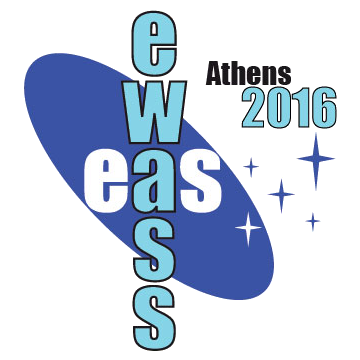Symposium S9
6 – 8 July 2016
The Dynamics of Star and Planet Formation
Aims and scope
 Stars form within a complex and dynamic network of filaments within molecular clouds, often in groups of hundreds to millions of stars where dynamical interactions are common. The dynamics of these gas filaments are fundamental are fundamental to the star formation process and can govern the properties of the emerging star clusters. On smaller scales the collapse of individual protostars, stellar accretion and related outflows shape the stellar environment and set the scene for subsequent planet formation. Our understanding of these processes is far from complete, but is in the process of being transformed by an impressive flux of data from new instruments and large-scale surveys.
Stars form within a complex and dynamic network of filaments within molecular clouds, often in groups of hundreds to millions of stars where dynamical interactions are common. The dynamics of these gas filaments are fundamental are fundamental to the star formation process and can govern the properties of the emerging star clusters. On smaller scales the collapse of individual protostars, stellar accretion and related outflows shape the stellar environment and set the scene for subsequent planet formation. Our understanding of these processes is far from complete, but is in the process of being transformed by an impressive flux of data from new instruments and large-scale surveys.
It is vital not just to understand each stage of the star and planet formation processes, but also the dynamical processes that link them. High resolution observations and hydrodynamic simulations of pre-stellar cores embedded in filaments are revealing the morphology, multiplicity, chemistry, and accretion patterns in these systems. Observations of the emerging circumstellar disks have revealed small-scale structures such as dust traps and gaps, which have implications for how planetary systems form and grow, and are also allowing us to trace their chemical evolution.
Over the entire mass spectrum and at most evolutionary stages, bipolar outflows and collimated jets appear to be fundamental for the extraction of excess angular momentum and the formation of both stars and planets. Such jets and outflows provide essential feedback mechanisms, together with stellar UV radiation and stellar winds, on the dynamics of the molecular cloud, the structure of the protostellar envelope, and the accretion in protoplanetary disks. Our understanding of these feedback mechanisms has also improved dramatically in the last few years.
The star formation process and the impact of feedback leave important imprints on the dynamics of young stellar systems that are providing key insights into how star clusters and OB associations form and evolve. The combination of cutting edge kinematic observations and advanced N-body simulations has particular promise in this area.
Recent results from Herschel, ALMA, and MUSE are revolutionising our understanding of the dynamics of star forming gas, while data from GES and Gaia are illuminating the kinematics of young stars and clusters. These observations all provide valuable tests of hydrodynamic and N-body simulations of these processes.
This meeting will be an important occasion bringing together observers and theorists to highlight the latest results on star and planet formation, make new connections and outline current challenges. We will also discuss new pathways for future observations with upcoming facilities such as JWST, LSST and the SKA.
Programme
- Molecular clouds and early-stage star formation
- Magnetospheric accretion onto protostars
- Kinematics and chemical evolution of pro to-planetary disks and implications for planet formation
- Dynamics of young stars and the formation of star clusters
- The origin and role of feedback mechanisms such as outflows, stellar winds and UV radiation
- Current (e.g., Herschel, ALMA, GES, MUSE, Gaia) and future (SKA, LSST, JWST) facilities and how they have / will impact the field of star and planet formation
Invited speakers
- Paul Clark (Cardiff University)
- Inga Kamp (Kapteyn Institute)
- Catherine Dougados (University of Grenoble)
- Dimitris Gouliermis (Heidelberg University / MPIA)
- Jonathan Mackey (Dublin Institute for Advanced Studies)
- Leonardo Testi (ESO)
- Anthony Brown (Leiden Observatory)
Scientific organisers
Kanaris Tsinganos and Nick Wright (co-chairs), Francesca Bacciotti, Jim Dale, Odysseas Dionatos, Manuel Guedel, Richard Parker, Magnus Persson, Sarah Ragan, Tom Ray, Christophe Sauty, Rowan Smith, and Catherine Vlahakis.
Contact
tsingan @ phys.uoa.gr and nick.nwright @ gmail.com
Updated on Tue Mar 29 19:14:03 CEST 2016
|

